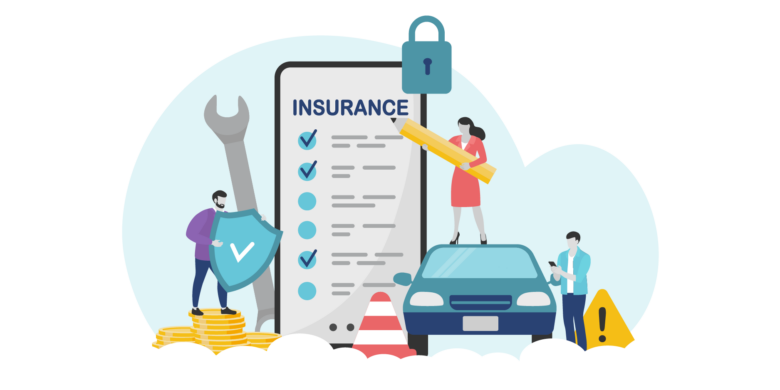Telematics insurance, another name for usage-based auto insurance, is changing the way insurance rates are estimated. Unlike standard insurance, which only takes into account information such as your age, driver’s license, and where you live, usage-based insurance takes into account how you drive. This new way of working can help smart drivers save a lot of money. With usage-based car insurance, you can save more money by:
1. Premium tailor-made for you:
Usage-based insurance uses telematics devices or mobile apps to track your driving habits, such as how fast you travel, how hard you brake, and how far you travel. By looking at this information, insurance companies can offer you customized rates based on your driving style. When drivers obey speed limits, stop carefully, and avoid sudden acceleration, they can receive lower insurance rates than drivers who are at greater risk of causing an accident.
2. Rewards for safe driving:
Rewards for safe driving are one of the best things about usage-based insurance. Insurance companies often offer you discounts, bonus points, or money back if you drive safely. This creates a positive feedback loop, with cautious drivers receiving lower insurance rates.
3. Real-time feedback:
Telematics gadgets and apps can tell you how you’re driving in real-time. This feedback can help you learn to drive better and make changes that make you safer. These changes can result in lower insurance rates over time as you demonstrate that you are a safe driver.
4. Discount based on usage:
Usage-based insurance allows you to save money based on how often and how long you drive, in addition to safe driving discounts. You may be able to save more if you drive less, especially during off-peak hours (when the roads are less busy). This means you can tailor your coverage to your driving style based on flexibility.
5. Benefits for young drivers:
Usage-based insurance is especially useful for younger drivers who don’t have much experience yet. Telematics data can not only be assessed against the statistical risk factors associated with age but can also indicate that younger drivers are better drivers. This, in turn, can lower rates and help new drivers build a positive insurance history.
6. Emergency Assistance:
Some usage-based insurance plans offer additional benefits such as towing services, stolen car recovery, and car problem diagnosis. These services not only reduce your insurance costs but also provide you with peace of mind.
7. Impact on the environment:
For drivers who care about the environment, usage-based insurance can also help them drive more environmentally friendly. Usage-based insurance can help protect the environment and reduce fuel costs by supporting energy-efficient driving habits such as smooth acceleration and deceleration.
8. Control and openness:
With usage-related insurance, you know exactly how your premium is calculated. You can review your driving records to learn more about the factors that affect your insurance rates and make informed choices about how to drive and save money.
9. Continuous improvement:
Usage-based insurance makes it more likely that drivers will continually improve their habits. When you get feedback and understand how it affects your insurance, you’re more likely to continue driving safely or make it safer. This will save you money in the long run and keep you safer on the road.
10. Customizable Coverage:
With usage-based coverage, you can change your coverage based on your driving style. As you get better at driving over time, you may be able to get better deals or lower rates, meaning you can continue to save money on your insurance.
Conclusion
All in all, usage-based car insurance is a big deal for those who want to save on insurance rates and make driving safer. Usage-based insurance aligns insurance costs with actual risk factors by using technology to track and reward safe driving behavior. This is done by providing you with personalized, clear, and cost-effective cover options. Explore usage-based insurance options to save the most money, make the roads safer, and enjoy the added benefits of regular coverage.
FAQs
1. What does usage-based car insurance mean?
Usage-based car insurance, also called telematics insurance, uses technology to observe how you drive. This includes information such as your speed, how quickly you accelerate or decelerate, how far you drive, and what time of day you drive.
2. How does usage-based insurance work?
A telematics device or mobile app placed in your car collects information about how you drive. This is how usage-based insurance works. Insurance companies look at this information to determine your level of risk and then set your rates based on how you drive.
3. Why is usage-based car insurance a good idea?
Usage-based insurance has many benefits, such as personalized premiums based on your driving hours, safe driving incentives, real-time feedback to help you drive better, additional discounts for low mileage or off-peak trips, and helping new drivers in establishing a good coverage history.
4. How can I save on insurance based on my consumption?
Usage-based insurance can save you money if you drive safely and sensibly. If you drive safely, insurance companies often reward you with discounts, bonus points, or money back. This allows you to save on premiums and overall costs.
5. Usage-based insurance: is it only available to certain types of drivers?
Needs-based insurance is available for all types of drivers but may be best for young and inexperienced drivers, as well as those who want to save on insurance rates and drive safely.
6. What information does a gadget or application that offers usage-based insurance collect?
Usage-based insurance devices or apps track how you drive, such as your speed, how hard you brake, how far you drive, what time of day or night you drive, and how well you obey traffic rules.
7. Does usage-based insurance protect my privacy?
Insurance companies value the privacy of their customers and often collect information about how people drive solely for insurance reasons. They do not record personal activities or locations unrelated to driving.
